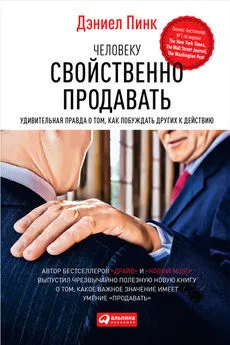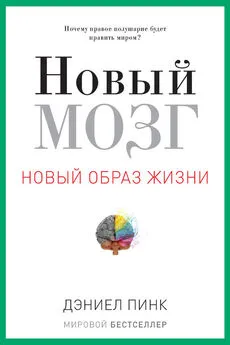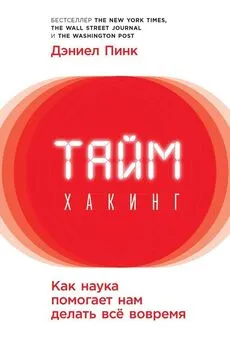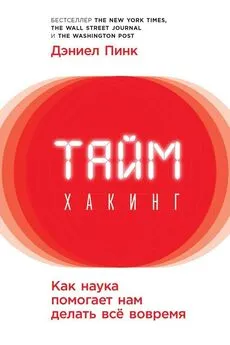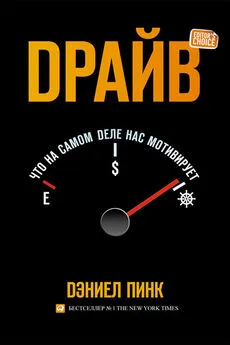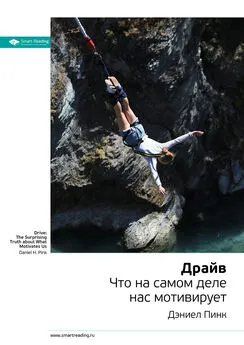Дэниель Пинк - Человеку свойственно продавать. Удивительная правда о том, как побуждать других к действию
- Название:Человеку свойственно продавать. Удивительная правда о том, как побуждать других к действию
- Автор:
- Жанр:
- Издательство:Array Литагент «Альпина»
- Год:2015
- Город:Москва
- ISBN:978-5-9614-3721-8
- Рейтинг:
- Избранное:Добавить в избранное
-
Отзывы:
-
Ваша оценка:
Дэниель Пинк - Человеку свойственно продавать. Удивительная правда о том, как побуждать других к действию краткое содержание
Человеку свойственно продавать. Удивительная правда о том, как побуждать других к действию - читать онлайн бесплатно ознакомительный отрывок
Интервал:
Закладка:
79
Cain, Quiet: The Power of Introverts , 166.
80
Deniz S. Ones and Stephan Dilchert, “How Special Are Executives? How Special Should Executive Selection Be? Observations and Recommendations,” Industrial and Organizational Psychology 2, no. 2 (June 2009): 163–70.
81
Og Mandino, The Greatest Salesman in the World (New York: Bantam, 1968), 71, 87.
82
Napoleon Hill, How to Sell Your Way Through Life (Hoboken, NJ: Wiley, 2010), 49.
83
Ibrahim Senay, Dolores Albarracín, and Kenji Noguchi, “Motivating Goal-Directed Behavior Through Introspective Self-Talk: The Role of the Interrogative Form of Simple Future Tense,” Psychological Science 21, no. 4 (April 2010): 499–504.
84
Ibid., 500–501.
85
Ibid., 500.
86
См., в частности, работы Эдварда Диси и Ричарда Райана, напр. Edward L. Deci and Richard M. Ryan, “The ‘What’ and ‘Why’ of Goal Pursuits: Human Needs and the Self-Determination of Behavior,” Psychological Inquiry 11, no. 4 (October 2000): 227–68. Я описываю часть этого исследования в своей книге: Daniel H. Pink, Drive: The Surprising Truth About What Motivates Us (New York: Riverhead Books, 2009).
87
Shirli Kopelman, Ashleigh Shelby Rosette, and Leigh Thompson, “The Three Faces of Eve: Strategic Displays of Positive, Negative, and Neutral Emotions in Negotiations,” Organizational Behavior and Human Decision Processes 99, no. 1 (January 2006): 81–101.
88
Ibid.
89
Barbara L. Fredrickson, Positivity: Top-Notch Research Reveals the 3 to 1 Ratio That Will Change Your Life (New York: Three Rivers Press, 2009), 21.
90
Barbara L. Fredrickson and Marcial F. Losada, “Positive Affect and the Complex Dynamics of Human Flourishing,” American Psychologist 60, no. 7 (October 2005): 678–86.
91
Cory R. Scherer and Brad J. Sagarin, “Indecent Influence: The Positive Effects of Obscenity on Persuasion,” Social Influence 1, no. 2 (June 2006): 138–46.
92
См., напр., Marcial Losada and Emily Heaphy, “The Role of Positivity and Connectivity in the Performance of Business Teams: A Nonlinear Dynamics Model,” American Behavioral Scientist 47, no. 6 (February 2004): 740–65.
93
Fredrickson and Losada, “Positive Affect.”
94
Ibid., 685.
95
Fredrickson, Positivity , 137.
96
Martin E. P. Seligman and Peter Schulman, “Explanatory Style as a Predictor of Productivity and Quitting Among Life Insurance Sales Agents,” Journal of Personality and Social Psychology 50, no. 4 (April 1986): 832–38.
97
Martin E. P. Seligman, Learned Optimism: How to Change Your Mind and Your Life (New York: Vintage Books, 2006), 7, 8.
98
Seligman and Schulman, “Explanatory Style,” 834–35.
99
Ibid., 835.
100
Seligman, Learned Optimism , 292.
101
Alicia H. Munnell, Anthony Webb, Luke Delorme, and Francesca Golub-Saas, “National Retirement Risk Index: How Much Longer Do We Need to Work?” Center for Retirement Research Report, no. 12–12 (June 2012); Teresa Ghilarducci, “Our Ridiculous Approach to Retirement,” New York Times , July 21, 2012.
102
См., напр., Shane Frederick, Nathan Novemsky, Jing Wang, Ravi Rhar, and Stephen Nowlis, “Opportunity Cost Neglect,” Journal of Consumer Research 36 (2009): 553–61.
103
Hal E. Hershield, Daniel G. Goldstein, William F. Sharpe, Jesse Fox, Leo Yeykelis, Laura L. Carstensen, and Jeremy N. Bailenson, “Increasing Saving Behavior Through Age-Processed Renderings of the Future Self,” Journal of Marketing Research 48 (2011): S23–S37.
104
Hershfield et al., “Increasing Saving Behavior.”
105
Ibid., citing Hal Erner-Hershfield, M. Tess Garton, Kacey Ballard, Gregory R. Samanez-Larken, and Brian Knutson, “Don’t Stop Thinking About Tomorrow: Individual Differences in Future-Self Continuity Account for Saving,” Judgment and Decision Making 4 (2009): 280–86.
106
Hershfield et al., “Increasing Saving Behavior.”
107
Jacob Getzels and Mihaly Csikszentmihalyi, The Creative Vision: A Longitudinal Study of Problem Finding in Art (New York: Wiley, 1976); Mihaly Csikszentmihalyi and Jacob Getzels, “Creativity and Problem Finding,” in Frank H. Farley and Ronald W. Neperud, eds., The Foundations of Aesthetics, Art, and Art Education (New York: Praeger, 1988). Цит. по: Mihaly Csikszentmihalyi, Flow: The Psychology of Optimal Experience (New York: Harper Perennial, 1981), 277.
108
J. W. Getzels, “Problem Finding: A Theoretical Note,” Cognitive Science 3 (1979): 167–72.
109
См., напр., Herbert A. Simon, “Creativity and Motivation: A Response to Csikszentmihalyi,” New Ideas in Psychology 6 (1989): 177–81; Stéphanie Z. Dudek and Rémi Cote, “Problem Finding Revisited,” in Mark A. Runco, ed., Problem Finding, Problem Solving, and Creativity (Norwood, NJ: Ablex, 1994).
110
The Conference Board, Ready to Innovate: Are Educators and Executives Aligned on the Creative Readiness of the U. S. Workforce? Research Report R-1424–08-RR (October 2008), доступно на http://www.artsusa.org/pdf/information_services/research/policy_roundtable/readytoinnovatefull.pdf
111
Robert B. Cialdini, Influence: Science and Practice , 5th ed. (Boston: Allyn & Bacon, 2009), 12–16.
112
В качестве хорошего введения в тему см.: Daniel Kahneman and Amos Tversky, “The Framing of Decisions and the Psychology of Choice,” Science 211 (1981): 453–58; Daniel Kahneman and Amos Tversky, “Rational Choice and the Framing of Decisions,” in Robin M. Hogarth and Melvin W. Reder, eds., Rational Choice: The Contrast Between Economics and Psychology (Chicago: University of Chicago Press, 1987); Erving Goffman, Frame Analysis: An Essay on the Organization of Experience (Cambridge MA: Harvard University Press, 1974).
113
Sheena S. Iyengar and Mark R. Lepper, “When Choice Is Demotivating: Can One Desire Too Much of a Good Thing?” Journal of Personality and Social Psychology 79 (2000): 995–1006.
114
Aaron R. Brough and Alexander Chernev, “When Opposites Detract: Categorical Reasoning and Subtractive Valuations of Product Combinations,” Journal of Consumer Research 39 (August 2012): 1–16, 13.
115
Leaf Van Boven and Thomas Gilovich, “To Do or to Have? That Is the Question,” Journal of Personality and Social Psychology 85 (2003): 1193–1202, 1194.
116
Ibid.
117
Varda Liberman, Steven M. Samuels, and Lee Ross, “The Name of the Game: Predictive Power of Reputations Versus Situational Labels in Determining Prisoner’s Dilemma Game Moves,” Personality and Social Psychology Bulletin 30 (September 2004): 1175–85.
118
Danit Ein-Gar, Baba Shiv, and Zakary L. Tormala, “When Blemishing Leads to Blossoming: The Positive Effect of Negative Information,” Journal of Consumer Research 38 (2012): 846–59.
119
Zakary Tormala, Jayson Jia, and Michael Norton, “The Preference for Potential,” Journal of Personality and Social Psychology 103 (October 2012): 567–83.
120
Это объяснение основано на отчете в книге: Lee Ross and Richard E. Nisbett, The Person and the Situation (London: Pinter & Martin, 2011), 132–33.
121
Рассказы об Отисе и его изобретении см. в Spencer Klaw, “All Safe, Gentlemen, All Safe!” American Heritage 29, no. 5 (August – September 1978); PBS Online, “Who Made America?”, доступно на http://www.pbs.org/wgbh/theymadeamerica/whomade/otis_hi.html; Otis Worldwide, “About Elevators,” на http://www.otisworldwide.com/pdf/AboutElevators.pdf
122
Kimberly D. Elsbach and Roderick M. Kramer, “Assessing Creativity in Hollywood Pitch Meetings: Evidence for a Dual-Process Model of Creativity Judgments,” Academy of Management Journal 46, no. 3 (June 2003): 283–301.
123
Ibid., 294.
124
Kimberly D. Elsbach, “How to Pitch a Brilliant Idea,” Harvard Business Review 81, no. 9 (September 2003): 117–23.
125
Elsbach and Kramer, “Assessing Creativity in Hollywood Pitch Meetings,” 296.
126
“Wordy Goods,” Economist , August 22, 2012, доступно на http://www.economist.com/blogs/graphicdetail/2012/08/daily-chart-5
127
Maurice Saatchi, “The Strange Death of Modern Advertising,” Financial Times , June 22, 2006.
128
Ibid.
129
Robert E. Burnkrant and Daniel J. Howard, “Effects of the Use of Introductory Rhetorical Questions Versus Statements on Information Processing,” Journal of Personality and Social Psychology 47, no. 6 (December 1984): 1218–30. Похожие результаты см. в: Richard E. Petty, John T. Cacioppo, and Martin Heesacker, “Effects of Rhetorical Questions on Persuasion: A Cognitive Response Analysis,” Journal of Personality and Social Psychology 40, no. 3 (March 1981): 432–40. О роли задающего вопросы см.: Rohini Ahluwalia and Robert E. Burnkrant, “Answering Questions About Questions: A Persuasion Knowledge Perspective for Understanding the Effects of Rhetorical Questions,” Journal of Consumer Research 31 (June 2004 г.): 26–42.
130
Burnkrant and Howard, “Effects of the Use of Introductory Rhetorical Questions,” 1224.
131
“CNN Poll: Are You Better Off Than Four Years Ago?” CNN.com, September 13, 2012, доступно на http://bit.ly/OKlUAy.
132
Matthew S. McGlone and Jessica Toighbakhsh, “Birds of a Feather Flock Conjointly (?): Rhyme as Reason in Aphorisms,” Psychological Science 11, no. 5 (September 2000 г.): 424–28.
133
Ibid.
134
Nicolas Ducheneaut and Victoria Bellotti, “E-mail as Habitat: An Exploration of Embedded Personal Information Management,” ACM Interactions 8, no. 5 (September – October 2001): 30–38.
Читать дальшеИнтервал:
Закладка:
